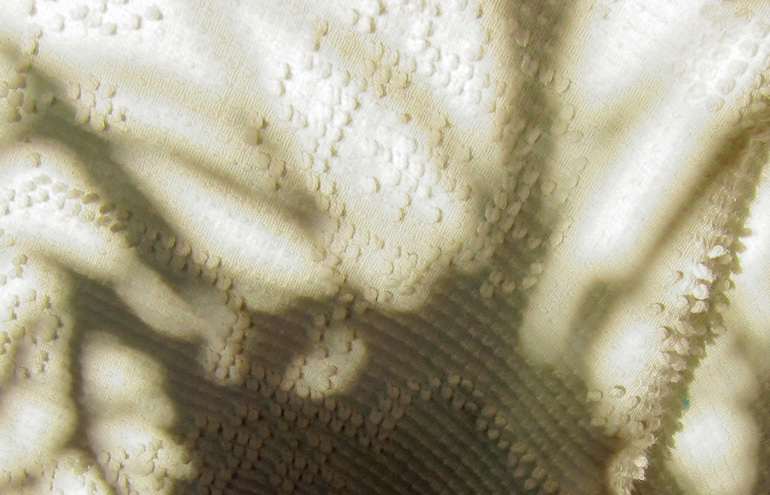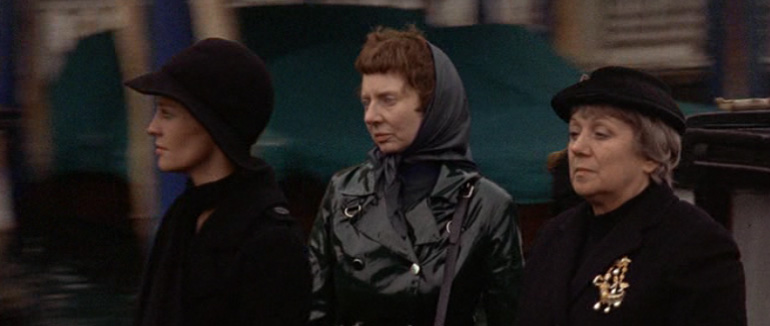Gotham Diary:
Sweep Me to Sleep
9 August 2012
Thursday, August 9th, 2012
Glancing through the feeds yesterday, I came across a piece by David Thomson on Marilyn Monroe and another on used bookstores by Jeremiah Moss. (Both were noticed at 3 Quarks Daily.) And I thought: Du mußt dein Leben ändern. Or, at least, find some new feeds. There is really nothing to be said about Marilyn Monroe. The very idea of thinking about Marilyn Monroe (as distinct from responding to her onscreen persona) is, simply, fatuous. It is true, as Thomson says, that nobody knows what Monroe’s story really was, or how and why it came to an end. Does that make her fascinating? Not to me. It’s arguable that Hollywood didn’t know what to do with her, but what can’t be denied is that she found sustained effort tedious, and was not inclined to work when she was bored. But what am I doing here, talking about Marilyn Monroe? Stop at once! And, as for used bookstores! Not only is there nothing to say about used bookstores, but there is hardly anything to say about books. Here are two things that you can say about books: they’re usually easy to read, and they pile up whether you read them or not. Every library in the world contains too many books, and every library is incomplete. Scylla, meet Charybdis. I’ll just get out of the way…Â
I guess it’s August. Did Rilke write about August?
***
De fil en aiguille — Marilyn Monroe > Michelle Williams > Eddie Redmayne — I watched The Other Boleyn Girl. On the surface, it’s a dreadful movie. The costumes are hideously confused, for one thing, treating the fashions of a good fifty year period as mutually contemporary, and the sets are little better; as production values go, it’s not much of an advance beyond Errol Flynn’s swashbucklers for Warner Brothers. The dialogue is truly preposterous, because it has to make plain to today’s (clueless) audiences what winks and nods would have expressed at a time when it was foolish to be explicit and straightforward. The dramatic situations are strictly soap opera.
And yet — why did I want to watch it? Why did I sit through it? The actors have a lot to do with it. Eric Bana no more resembles Henry VIII than I do — no, come to think of it, I look a great deal more like Henry VIII than he does. It cannot be said that Mr Bana looks comfortable in all those Joan Crawford shoulder pads and cocktail waitress skirts. But he’s fun. Mark Rylance is great fun, a complete toady — you want to step on him. David Morrissey’s Norfolk is a lout, possessed of less brain than he boasts, but a surfeit of King James talk withal. He’s not fun, exactly, but it is funny that he dresses as though for the court of Henry VII, complete with Christopher Columbus’ bouncy hair. Kristin Scott Thomas gives good value; whatever they paid her to impersonate Elizabeth Howard, Lady Boleyn, she earned every penny. Most of all though, the movie belongs to Ana Torrent, who plays Catherine of Aragon. Every time I watch The Other Boleyn Girl, I make a resolution to see this amazing actress in other movies. So far, nothing has come of it, but just you wait. When she says, “Where is my wise husband?”, something clicks, and you realize that all Spaniards are natural monarchs.
What about Scarlett and Natalie, you’re asking. They’re fun, too. They have wildly different English accents; Ms Johansson sounds like a governess at Chatsworth, while Ms Portman suggests a party girl who has spent a lot of time on translantic steamships. It’s fun to hear both of them say, especially to one another, “my sistah.” The worst thing about the movie is that it never manages to present them as serious romantic rivals in the fine tradition of Bette Davis and Mary Astor. As Miranda might put it, there is no “sweep.”
Also: Call the Midwife has taken onscreen childbirth to new levels of interest and satisfaction. If all you’re going to do is moan and scream, we’d rather take it as read into the record.
I’ll stop there. It’s a terrible movie. It’s not a train wreck; it’s just bad. But it’s still one of my favorites. You can’t say that any of the historical personages has been seriously misrepesentented in an unfavorable way. Almost all of them — the real people — were just as ambitious and just as short-sighted. (Catherine was just as grand.) What’s wrong is what’s usually wrong with historical dramas: the characters are disfigured by the attempt to beam them up into contemporary parlance. It’s fun to see modern young actresses with little or no classical training and closets full of blue jeans attempt to put them over.
***
A brilliant conspiracy theory occurred to me yesterday. Actually, it’s not much of a conspiracy theory, because if it were true it would be the work of one man, acting alone. Well, perhaps not acting alone in the strictest sense, but then this guy is so powerful that he can tell people what to do without waiting for their cooperation. My conspiracy theory is this: The Second Avenue subway is being paid for, at least on a short-term cash basis, by Mayor Michael Bloomberg. His gift to New York.
I have no idea where this idea comes from — which just shows that I’m on to something. The last time I looked, the new T line was priced at $4.5 billion. I don’t know if the mayor is rich enough to foot the bill, but, once you start thinking about it, you realize that there are lots of billionaires out there with that kind of money. Maybe not a hundred, but more than just Henry Ford and John D Rockefeller. Let’s hit them up!
Anyway, you heard it here first. People complain about how hard the mayor has made it to drive through Midtown (bravo!), and the projected ban on supersized sodas has almost everyone nattering about the nanny state. They say, “Thank God Bloomberg will be gone soon.” I say, “Not so fast.” Â Â
August.
***
Have you seen The Prince and the Showgirl? Recently? It’s a bad movie, too, but not my kind of bad movie. When Olivier is off, he’s unwatchable, and all his prince does is make you wish that Henry Higgins would make an entrance and unmask him as Zoltan Karpathy. As for Marilyn Monroe, she’s great when she’s alone with the camera, which is not exactly what I call “acting.” Face to face with another actor, she behaves like a producer’s niece, someone who has been given a part in order to make a mogul happy — think Miss Casswell. And who has been told, “Just act naturally, sweetie” — a Betty Boop who’s dying to take off her foundation garments. Everything about Monroe suggests sleep. If only the film were in black and white, you might just be able to nod off.Â







